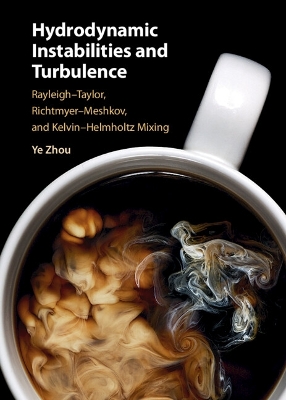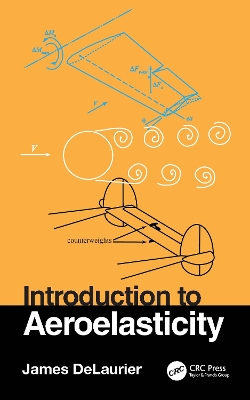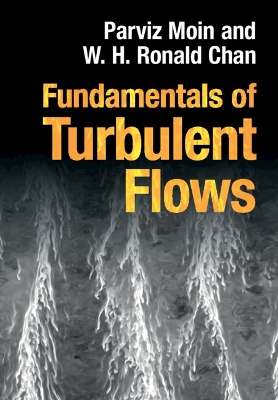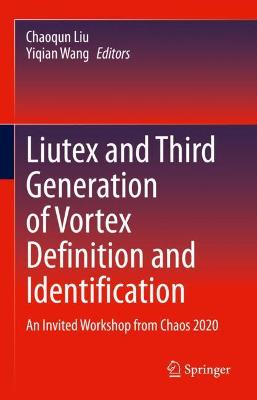Liutex and Third Generation of Vortex Definition and Identification
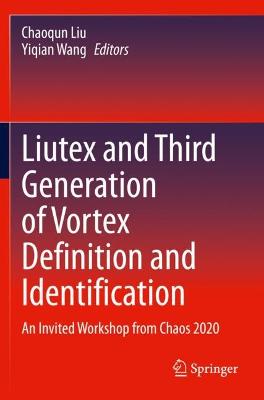 portes grátis
portes grátis
Liutex and Third Generation of Vortex Definition and Identification
An Invited Workshop from Chaos 2020
Liu, Chaoqun; Wang, Yiqian
Springer Nature Switzerland AG
07/2022
468
Mole
Inglês
9783030702199
15 a 20 dias
892
Descrição não disponível.
Part 1. Liutex Theory and Method.- Chapter1. Liutex and Third Generation of Vortex Identification Methods.- Chapter2. Incorrectness of the Second Generation Vortex Identification Method and Introduction to Liute.- Chapter3. Dimensional and Theoretical Analysis of Liutex and Second-Generation Vortex Identification methods.- Chapter4. Mathematical study on local fluid rotation axis-Vorticity is not the rotation axis.- Chapter5. No vortex in flows with straight streamlines-Some comments on real Schur forms of velocity gradient ?v.- Chapter6. Mathematical definition of vortex boundary and boundary classification based on topological type.- Chapter7. A comparison of Liutex with other vortex identification methods on the multiphase flow past a cylinder using LBM on GPU.- Chapter8. On the comparison of Liutex method with other vortex identification methods in a confined tip-leakage cavitating flow.- Chapter9. Lagrangian Liutex.- Chapter10. Visualizing Liutex Core Using Liutex line and Liutex tubes.- Chapter11. Analysis of difference between Liutex and ?_ci.- Part 2. Liutex Applications for Turbulence Research.- Chapter12. Hair-pin Vortex Formation Mechanisms based on LXC-Liutex Cores in Thermal Turbulent Boundary Layer with Rib-tabulator.- Chapter13. Liutex in the vortex statistics of 2D turbulent system.- Chapter14. Liutex and Proper Orthogonal Decomposition for Vortex Structure in the Wake of Micro Vortex Generator.- Chapter15. Study on the Formation and Evolution of Asymmetrical Vortex Structures in the Late Transitional Boundary Layer.- Chapter16. Experimental studies on vortex structures based on MSFLE and Liutex.- Chapter17. Correlation Analysis between low frequency shock oscillation and Liutex in SBLI.- Chapter18. Micro-Ramp Wake Structures Identified by Liutex.- Chapter19. Application of Liutex and some other second-generation vortex identification methods to direct numerical simulation data of a transitional boundary layer.- Part 3. Liutex Applications in Engineering.- Chapter 20. Investigation of Flow Structures around Cylinders with High Reynolds Number by Liutex Vortex Identification Methods.- Chapter 21. Vortex Identification for Study of Flow Past Stationary and Oscillating Cylinder.- Chapter 22. Simulation and Analysis of Breaking Waves in Deep Water.- Chapter 23. Numerical Investigation of Complex Flow Field in Ship Self-Propulsion and Zigzag Maneuverability .- Chapter 24. Application of Liutex for Analysis of Complex Wake Flow Characteristics of Wind Turbine.- Chapter 25. Application of Omega-Liutex identification method in the cavitating flows around a three-dimensional bullet .- Chapter 26. Analysis of Vortex Evolution in Turbine Rotor Tip Region Based on Liutex Method.- Chapter 27. Numerical Simulation of Leakage Flow inside Shroud and Its Interaction with Main Flow in an Axial Turbine.- Chapter 28. The identification of tip leakage vortex of an axial flow waterjet pump by using Omega method and Liutex.- Chapter 29. Eddy currentresearch of oxy-fuel heating furnace based on third generation vortex recognition method.- Chapter 30. Numerical investigation of the cavitation vortex interaction around a twisted hydrofoil with emphasis on the vortex identification method.
Este título pertence ao(s) assunto(s) indicados(s). Para ver outros títulos clique no assunto desejado.
vortex science;turbulence research;Liutex theory;vortex dynamics;controlling of turbulence;thermodynamics;hydrodynamics
Part 1. Liutex Theory and Method.- Chapter1. Liutex and Third Generation of Vortex Identification Methods.- Chapter2. Incorrectness of the Second Generation Vortex Identification Method and Introduction to Liute.- Chapter3. Dimensional and Theoretical Analysis of Liutex and Second-Generation Vortex Identification methods.- Chapter4. Mathematical study on local fluid rotation axis-Vorticity is not the rotation axis.- Chapter5. No vortex in flows with straight streamlines-Some comments on real Schur forms of velocity gradient ?v.- Chapter6. Mathematical definition of vortex boundary and boundary classification based on topological type.- Chapter7. A comparison of Liutex with other vortex identification methods on the multiphase flow past a cylinder using LBM on GPU.- Chapter8. On the comparison of Liutex method with other vortex identification methods in a confined tip-leakage cavitating flow.- Chapter9. Lagrangian Liutex.- Chapter10. Visualizing Liutex Core Using Liutex line and Liutex tubes.- Chapter11. Analysis of difference between Liutex and ?_ci.- Part 2. Liutex Applications for Turbulence Research.- Chapter12. Hair-pin Vortex Formation Mechanisms based on LXC-Liutex Cores in Thermal Turbulent Boundary Layer with Rib-tabulator.- Chapter13. Liutex in the vortex statistics of 2D turbulent system.- Chapter14. Liutex and Proper Orthogonal Decomposition for Vortex Structure in the Wake of Micro Vortex Generator.- Chapter15. Study on the Formation and Evolution of Asymmetrical Vortex Structures in the Late Transitional Boundary Layer.- Chapter16. Experimental studies on vortex structures based on MSFLE and Liutex.- Chapter17. Correlation Analysis between low frequency shock oscillation and Liutex in SBLI.- Chapter18. Micro-Ramp Wake Structures Identified by Liutex.- Chapter19. Application of Liutex and some other second-generation vortex identification methods to direct numerical simulation data of a transitional boundary layer.- Part 3. Liutex Applications in Engineering.- Chapter 20. Investigation of Flow Structures around Cylinders with High Reynolds Number by Liutex Vortex Identification Methods.- Chapter 21. Vortex Identification for Study of Flow Past Stationary and Oscillating Cylinder.- Chapter 22. Simulation and Analysis of Breaking Waves in Deep Water.- Chapter 23. Numerical Investigation of Complex Flow Field in Ship Self-Propulsion and Zigzag Maneuverability .- Chapter 24. Application of Liutex for Analysis of Complex Wake Flow Characteristics of Wind Turbine.- Chapter 25. Application of Omega-Liutex identification method in the cavitating flows around a three-dimensional bullet .- Chapter 26. Analysis of Vortex Evolution in Turbine Rotor Tip Region Based on Liutex Method.- Chapter 27. Numerical Simulation of Leakage Flow inside Shroud and Its Interaction with Main Flow in an Axial Turbine.- Chapter 28. The identification of tip leakage vortex of an axial flow waterjet pump by using Omega method and Liutex.- Chapter 29. Eddy currentresearch of oxy-fuel heating furnace based on third generation vortex recognition method.- Chapter 30. Numerical investigation of the cavitation vortex interaction around a twisted hydrofoil with emphasis on the vortex identification method.
Este título pertence ao(s) assunto(s) indicados(s). Para ver outros títulos clique no assunto desejado.

